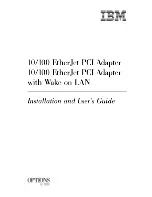
Lynx Mixer Reference
Valid linear PCM types (bit width):
PCM
PCM16
PCM18
PCM19
PCM20
PCM22
PCM23
PCM24
Valid compressed, non-PCM types:
Dolby AC-3
MPEG1L1
MPEG1L2
MPEG2
MPEG2AAC MPEG2L1
MPEG2L2
MPEG2L3 MPEG-4
DTS I
DTS II
DTS III
ATRAC
ATRAC2/3
Emphasis
Off (gray)
Emphasis is off
50/15us (green)
50/15us pre-emphasis
J17 (green)
CCITTJ.17 emphasis
Unknown (green)
Emphasis not indicated
The emphasis bit is part of the channel status data and is used by a transmitter to indicate if the audio data
being transmitted has been encoded with audio signal emphasis.
Rate
This indicator represents sample rate encoded in the channel status data.
Valid Rates include the following:
32.0; 44.1; 48.0; 88.2; 96.0; 176.4; 192.0 kHz (all in green) or Unknown (red)
Note: it is the responsibility of the transmitting device to send rate status that matches the actual rate of the
audio data stream being sent. However, it is possible for a rate discrepancy to exist during a valid
transmission.
Clock Rate
Clock Rate displays a real-time measurement of the sample rates of the incoming signals. These
measurements are very useful for evaluating and validating digital inputs when synchronization or clocking
issues are encountered.
The Settings Menu offers a “High Resolution Clock Rate” option that provides three decimal places of
accuracy instead of the default one decimal place. With this option enabled, lower digits may fluctuate
rapidly as a result of measurement resolution.
When DualWire In is checked to enable AES dual-wire operation on input, Clock Rate should read half of
the encoded channel status rate described above. For example, when running at 192 kHz with dual-wire
inputs, the Clock Rate should indicate 96.0 kHz and the Current Rate should indicate 192 kHz.
AES16e User Manual
Page 42
















































